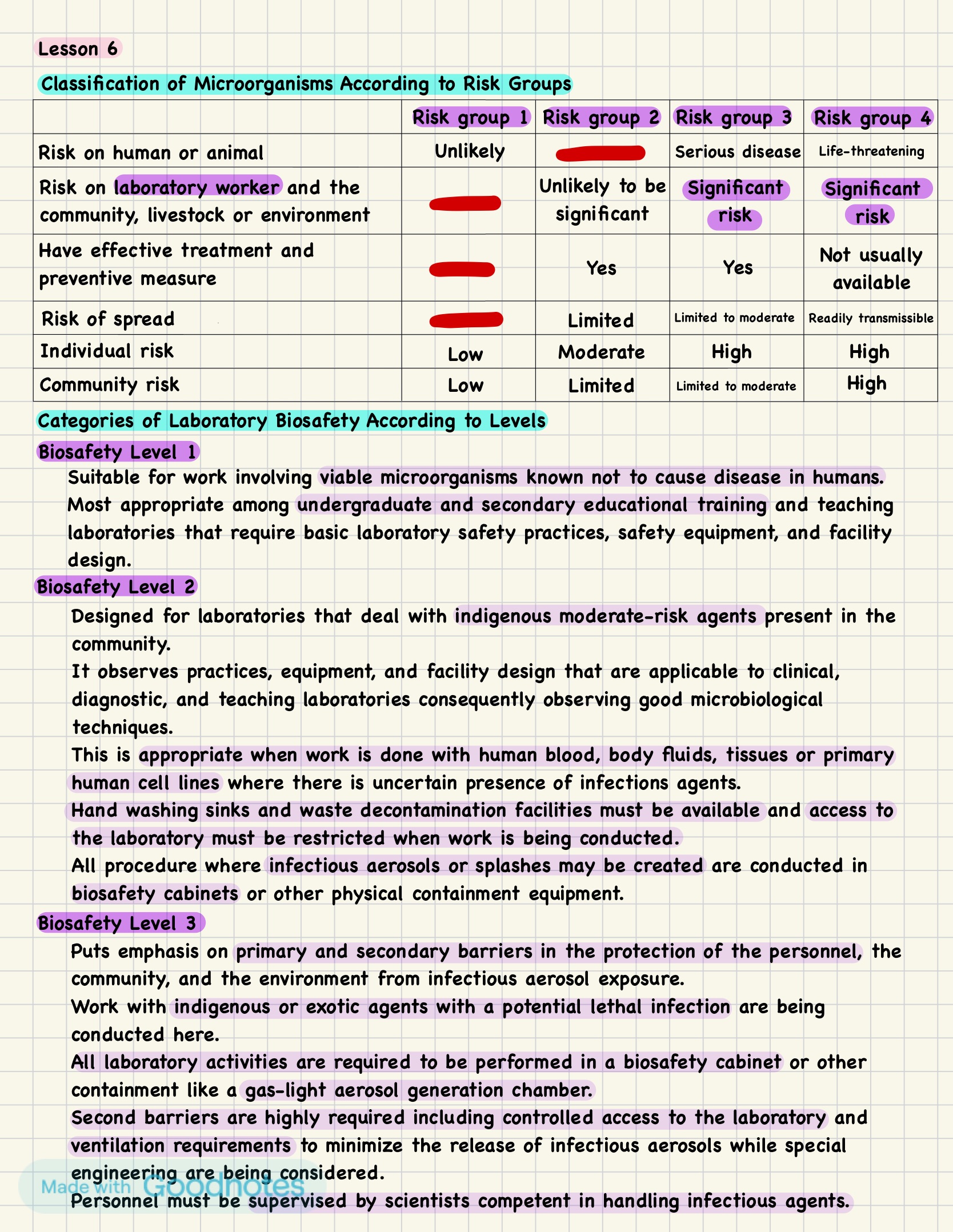Classification of Microorganisms According to Risk Groups and Biosafety Levels

Understand the Problem
The question involves understanding the classification of microorganisms according to risk groups and the categories of laboratory biosafety levels. It explains the risks associated with different groups and the corresponding biosafety measures, suggesting the importance of adhering to safety practices when working with microorganisms.
Answer
Microorganisms are categorized into Risk Groups 1-4 and Biosafety Levels 1-4, correlating risk with required safety measures.
The classification divides microorganisms into Risk Groups and corresponding Biosafety Levels. Risk Group 1 poses the lowest risk, unlikely to cause disease. Group 4 poses the highest risk, with life-threatening diseases. Biosafety Levels 1-4 apply corresponding safety measures, with Level 1 for low risk and Level 4 for high risk.
Answer for screen readers
The classification divides microorganisms into Risk Groups and corresponding Biosafety Levels. Risk Group 1 poses the lowest risk, unlikely to cause disease. Group 4 poses the highest risk, with life-threatening diseases. Biosafety Levels 1-4 apply corresponding safety measures, with Level 1 for low risk and Level 4 for high risk.
More Information
Understanding these classifications is essential for ensuring appropriate laboratory safety and handling procedures to prevent infection and cross-contamination.
Tips
Common mistakes include misunderstanding the correlation between risk groups and biosafety levels or underestimating the precautions required for different levels.
Sources
- Risk Groups - Biosafety Levels - PHE.gov - phe.gov
- Safety/Risk Groups - 2019.igem.org - 2019.igem.org
AI-generated content may contain errors. Please verify critical information